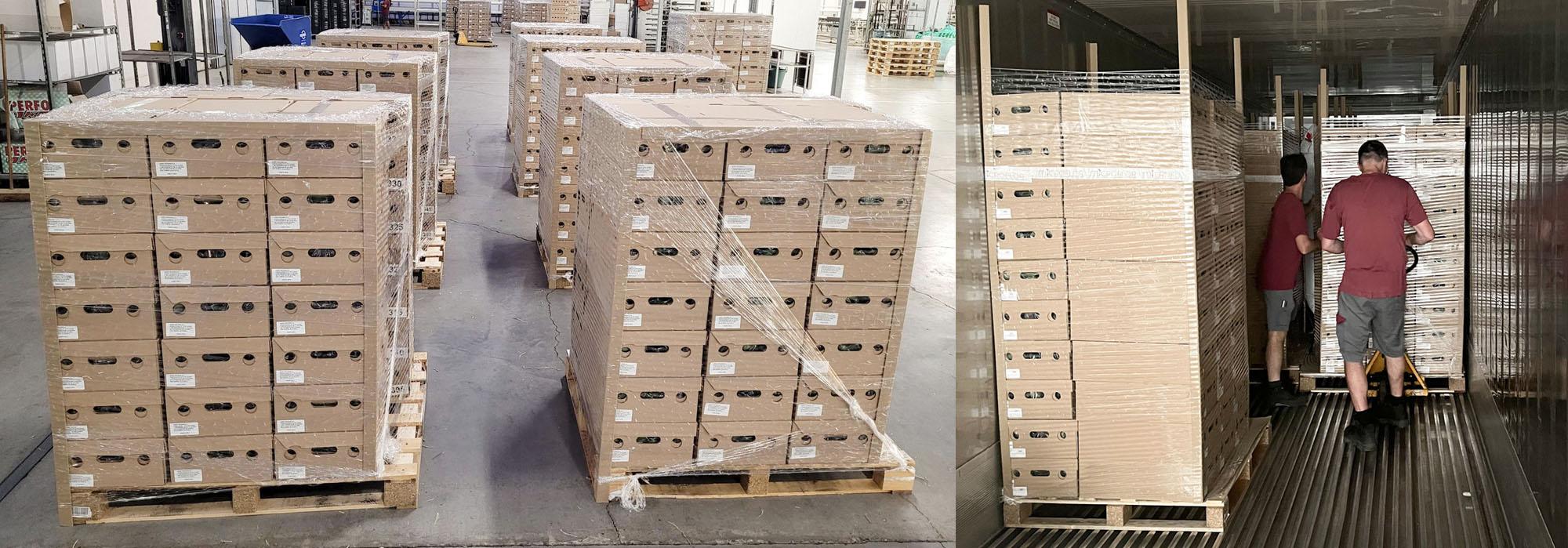Why sea transport is good for both plants and customers ?
You are here

Why sea transport is good for both plants and customers ?
Microflor is growing. Even overseas. When a customer in Costa Rica asked us for a relatively large consignment of young plants last year, we took the plunge. And that was the first time we shipped plants across the Atlantic Ocean. Another milestone for Microflor. Customer Success Officer Tom Raveel explains how he made sure the whole thing went smoothly.
Experienced captain at the helm
Tom: “I came on board at Microflor in March 2021. The plans to transport plants by sea were already on the drawing board at that point. It was quite a challenge. But with 28 years of experience in export and logistics at the Port of Antwerp, I felt I was in the perfect position to take things forward. In April 2021, we drew up an action plan with the team. The first fleet left port for Costa Rica in July 2021, with 44,000 young plants on board. That was pretty intense. But the results are something to be proud of.”
Lower costs, greater volume and sustainability
There are considerable advantages to using sea transport. Tom explains the most important three:
- • Lower costs. Energy prices are skyrocketing all over the world. Obviously, that’s affecting every means of transport. As an alternative to expensive air transport, sea transport is actually up to two thirds cheaper.
- • Greater volume. A shipping container is a fixed loading unit. You purchase a specific capacity. Whether you use it to transport 20,000 or 60,000 plants, the cost is the same. So this form of export is definitely cost-effective for a big shipment of about 60,000 young plants.
- • Sustainability. The ecological footprint of transporting goods from A to B is lower than it would be by air or road. Obviously, you need to factor in transport to and from the ports, but in the end you still have an environmentally friendly export method.
Export in optimal circumstances.
If you’re transporting machines, furniture, clothing etc., you don’t need to worry about other factors. But Microflor trades in living products, so the right technical settings during transport are absolutely crucial.
“I can safely say that we have found a plant and customer-friendly solution for our young plants in the hard world of logistics. After all, they’re not transported in any old container. We use reefer containers for sea transport. These are containers in which the load is kept at a constant, controlled temperature. The relative humidity is also kept constant. So the young plants travel from A to B in perfect climatic conditions.
Another challenge with sea transport is inner and outer packaging. We thoroughly researched that as well. As a result, the plants arrive with the customer safe and intact, in an environmentally friendly way.”
Healthy pl ants for a satisfied customer.
ants for a satisfied customer.
There’s a great deal involved in organising transport in reefer containers. Tom gives us a quick overview of the different steps.
“To begin with, you find yourself in contact with many different stakeholders and partners. You need to make clear arrangements with the shipping company, deal with certain procedures, submit to controls and so on. Then there’s the administrative aspect, such as phytosanitary certification or customs documents that have to be in order, as well as other procedures in the maritime world.
There is also the flow of the container itself to consider. Every step in the journey needs to be correct, from the positioning of the container to loading and securing the freight. The most important attention point is that you must never interrupt the temperature chain (i.e. heating). My team and I had to figure it all out ourselves. That was quite a challenge, but the customer in Costa Rica was very satisfied. And not just that: it has made our relationship of trust even stronger.”
With the wind in our sails
In the meantime, some five further shipments have set sail. “We’re only just getting started”, says Tom. “We still have a long way to go, but I am absolutely convinced that sea transport has a future. The advantage is that with good planning and a professional team, you have a great deal of control and can always keep your promises. This means of transport offers particular opportunities for our young plants. For our cuttings it’s not yet an option, because transport takes too long.
But I see a wealth of possibilities. Opportunities to drop anchor in other markets as well.”